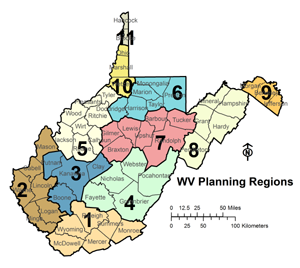Definitions
What is "broadband?"
“Broadband” is typically used to describe internet service that provides high speed data transmission as well as services such as online video, streaming, interactive sites and secure business applications. Dial-up services run at slower speeds and are not considered "broadband."
What do the different Technologies mean?
- Asymmetrical Digital Subscriber Line (ADSL) - used primarily by residential customers who receive a lot of data but do not send much. ADSL typically provides faster speed in the downstream direction than the upstream direction.
- Symmetrical Digital Subscriber Line (SDSL) - used typically by businesses for services such as video conferencing. Â Downstream and upstream traffic speeds are equal. Faster forms of SDSL, typically available to businesses, include High-data-rate Digital Subscriber Line (HDSL) and Very High-data-rate Digital Subscriber Line (VDSL).
- Broadband over Powerline (BPL) - BPL delivers broadband over the existing low and medium voltage electric power distribution network. BPL speeds are comparable to DSL and cable modem speeds. BPL is an emerging technology, currently available in very limited areas. Â It has significant potential because power lines are installed virtually everywhere, alleviating the need to build new broadband facilities to every customer.)
- Coaxial cables that deliver traditional picture and sound services to your TV set via a modem can deliver data at speeds are comparable to typical residential DSL or faster.
- Fiber-optic cable transmits data at higher speeds using light. Some network providers (mostly telephone companies) are offering fiber-based broadband in limited areas, expanding their fiber networks. Both traditional cable operators and fiber-based operators are beginning to provide bundled voice, Internet access, and video services.
- WiFi (wireless fidelity) is a fixed, short-range technology that is often used in conjunction with DSL or cable modem. It connects a home or business to the Internet using a radio link between the customer's location and the service provider's facility. This fixed wireless broadband service is becoming more widely available at airports, city parks, bookstores, and other public locations called "hotspots."
- Fixed wireless technologies using longer-range directional equipment can provide broadband service in remote or sparsely populated areas where other types of broadband would be too costly to provide. Speeds are generally comparable to DSL and cable modem service speeds.
- Mobile wireless broadband services, such as 3G, are also becoming available from mobile telephone service providers, such as cell phone companies, and others. These services generally require a special card with a built-in antenna that plugs into a user's laptop computer. Generally, they provide lower speeds, in the range of several hundred kbps.
- Just as satellites orbiting the earth provide necessary links for telephone and television service, they can also provide links for broadband services. Satellite broadband is another form of wireless broadband and is particularly useful for serving remote or sparsely populated areas. Downstream and upstream speeds for satellite broadband depend on several factors, including the provider and service package purchased, the consumer's line of sight to the orbiting satellite, and the weather. Satellite service can be disrupted in extreme weather conditions. Typically a consumer can expect to receive (download) at a speed of about 1 Mbps and send (upload) at a speed of about 200 kbps. These speeds may be slower than DSL and cable modem, but the download speed is still much faster than the download speed with dial-up Internet access.
Other terms
Backbone - The part of a communications network that acts like the central nervous system, a central hub from which all parts of the network extend.
Middle mile - Network infrastructure that does not deliver services to customers, but which provides for interoffice transport, backhaul, connectivity, or special access to service providers.
Last mile - The actual portion of a network that provides broadband service to end users such as households, businesses, community anchor institutions, public safety entities, etc...
Community Anchor Institutions - Schools, libraries, medical and healthcare providers, public safety institutions and other support agencies can facilitate dynamic services to our communities and citizens using broadband enabled technologies.
Served Area - Service area where more than half of households have broadband access that meets defined speed requirements and subscription rates that exceed 40%.
Underserved Area - Service area, consisting of one or more contiguous census blocks, where half the households lack access to minimum internet speeds of at least 3 Mpbs, or areas where less than 40% of households subscribe to any service.
Unserved Area - Service area, made up of one or more contiguous census blocks, where at least 90% of households lack access to facilities-based broadband service, either wireline or wireless. Wireless- Connects a home or business to the Internet using an over-the-air radio link between the customer and the service provider’s facility. Wireless broadband can be mobile or fixed.



 1 Mont Chateau Road
1 Mont Chateau Road


